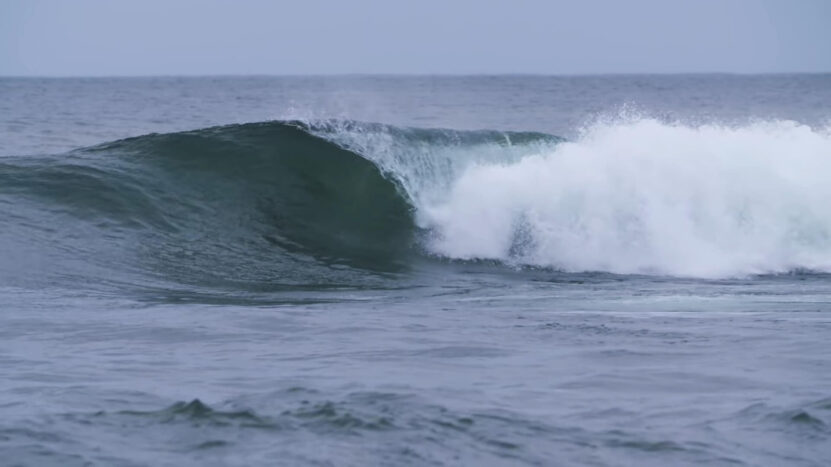Lake Superior, the largest and arguably most captivating of North America’s Great Lakes, is renowned for its expansive, serene beauty. Yet, beneath its calm surface lies a realm filled with mystery and peril. Known as the “Graveyard of the Great Lakes,” its icy waters have claimed numerous ships, preserving their stories in the depths.
This lake is not just a natural wonder but a keeper of secrets, from ancient rock formations to astonishing natural phenomena. Whether it’s the chilling shipwrecks or the eerie clarity of its water, Lake Superior’s hidden aspects are as intriguing as they are daunting. Prepare to uncover 12 fascinating and spooky facts about this majestic lake that will surprise and enthrall you.
1. It has over 350 shipwrecks beneath its surface

Lake Superior’s depths conceal over 350 shipwrecks, earning it the ominous nickname “Graveyard of the Great Lakes.” Among these, the SS Edmund Fitzgerald is perhaps the most famous.
This massive freighter sank during a severe storm in 1975, and its tragic fate was immortalized in a haunting ballad by Gordon Lightfoot. These shipwrecks, preserved in the lake’s cold, clear waters, add an eerie mystique to Lake Superior’s already formidable reputation.
2. It’s the deepest and coldest of the Great Lakes
As the deepest of the Great Lakes, Lake Superior has a maximum depth of 1,333 feet (406 meters). This immense depth not only contributes to its cold temperatures but also means that many shipwrecks remain inaccessible and unexplored. The lake’s dark, deep waters add an element of mystery and danger, preserving its secrets far below the surface.
If you want to visit this place but don’t know where to start, check out our other article.
3. It has waves that can reach up to 30 feet

During severe storms, Lake Superior can produce significant wave heights. While most storm waves typically reach heights of around 20-30 feet (6-9 meters), the highest recorded wave on Lake Superior was 29 feet (8.8 meters) near Marquette, Michigan, on October 24, 2017.
Extreme weather conditions have historically caused considerable damage to ships, contributing to Lake Superior’s notorious reputation for shipwrecks.
4. It influences its own climate
Lake Superior is so large that it has its own climate. It creates lake-effect snow and unique weather patterns, significantly influencing the surrounding regions. This microclimate can be both a blessing and a curse for those living nearby.
5. It’s a lake with its own tides

Unlike most freshwater lakes, Lake Superior experiences tidal effects known as seiches. These are oscillations that can cause water levels to rise and fall dramatically within minutes, similar to small-scale tides. Seiches are caused by changes in atmospheric pressure and strong winds, adding another layer of complexity and danger to navigating the lake.
6. The Lake Superior Triangle
Similar to the Bermuda Triangle, the “Lake Superior Triangle” is an area reputed to cause mysterious ship and plane disappearances. While these stories are largely anecdotal and lack substantial evidence, they contribute to the lake’s eerie reputation. The treacherous waters and unpredictable weather of Lake Superior make such myths and legends plausible to many.
7. Clear but Dangerous Waters
The water clarity in Lake Superior is remarkable, with visibility often reaching impressive depths. While visibility can vary, in some areas it is typically around 65-75 feet (20-23 meters). There are reports suggesting that under ideal conditions, visibility can extend up to 100 feet (30 meters). This crystal-clear water adds an element of eerie beauty to the lake, revealing underwater features and shipwrecks that appear to float in mid-water
8. It contains 10% of the world’s fresh surface water
Holding about 10% of the world’s fresh surface water, Lake Superior is a giant reservoir. This volume is so immense that if spread evenly, it could cover both North and South America with a foot of water. The sheer amount of water is mind-boggling and critical to the planet’s freshwater supply.
9. Deadly Hypothermia Risks

The cold waters of Lake Superior can induce hypothermia in minutes, a fact that has contributed to many fatalities over the years. Even in summer, the water temperatures remain perilously low, making swimming and other water activities dangerous without proper precautions.
10. It hosts record-holding lake sturgeon
Lake Superior hosts lake sturgeon, ancient fish that can live over 100 years and grow over 6 feet (1.83 m) long. These prehistoric giants are a living testament to the lake’s rich biodiversity and ancient history.
11. Largest Freshwater Sand Dunes

Pictured Rocks National Lakeshore boasts the largest collection of freshwater sand dunes in the world. These towering dunes provide stunning vistas and are a testament to the lake’s natural beauty and power.
12. Remote and Isolated
Many parts of Lake Superior are remote and sparsely populated, making rescue operations difficult. This isolation increases the danger for those who venture into its waters, as help may be far away in case of an emergency. The lake’s vast, wild expanse can quickly turn perilous for the unprepared.
The bottom line
Lake Superior is a place full of mystery and awe. With its deep, dark waters and shipwreck stories, along with a rich history and unique weather, this lake pulls you in if you’re curious enough to explore. It’s one of those natural spots that keeps you coming back for more.

